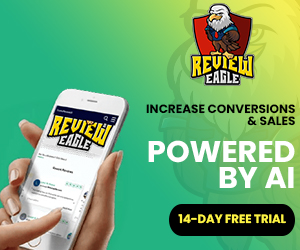Have you ever wondered why some website visitors seem to vanish into thin air? One moment they’re on your site, clicking through your pages, and the next moment, they’re gone without a trace. It can be frustrating, to say the least. But fear not, because there is a powerful tool that can help you prevent these lost visitors and bring them back to your website. It’s called retargeting, and it has the potential to revolutionize your online presence. Retargeting is a game-changer when it comes to reclaiming lost website visitors. By understanding how it works and implementing it into your marketing strategy, you can dramatically increase your chances of converting those lost visitors into loyal customers. In this blog post, we’ll delve into the power of retargeting and explore how it can help you prevent website visitors from getting lost in the vast sea of the internet. So, what exactly is retargeting? Put simply, retargeting is a marketing technique that allows you to reach out to people who have previously visited your website but didn’t take any significant action. It works by tracking these visitors using cookies and then displaying targeted advertisements to them as they browse other websites or social media platforms. With retargeting, you have the opportunity to present your brand and products to an audience that has already shown interest, increasing the likelihood of securing their business. But how does retargeting actually prevent visitors from becoming lost? Well, imagine this scenario: a potential customer stumbles upon your website, lingers for a while, maybe even adds a few items to their shopping cart, but eventually leaves without making a purchase. Without retargeting, it’s likely that they will forget about your brand or be distracted by other competing options. However, by employing retargeting techniques, you can follow up with personalized advertisements, reminding them of the products they were interested in and enticing them to return to your website. In conclusion, the power of retargeting lies in its ability to re-engage lost website visitors and guide them back to your virtual doorstep. By leveraging this innovative marketing tool, you can increase your chances of converting casual browsers into loyal customers. So, if you’re tired of losing valuable website traffic, stay tuned for our upcoming blog posts, where we’ll dive deeper into the world of retargeting and provide you with actionable strategies to implement it effectively. Don’t let your visitors become lost in the vast online abyss – harness the power of retargeting to keep them coming back for more.
Why Website Visitors Become Lost
When it comes to website visitors becoming lost, there are several factors at play. One major reason is the lack of intuitive and user-friendly website navigation. If visitors can’t easily find what they’re looking for, they’re more likely to get frustrated and leave. Utilizing clear menus, search bars, and breadcrumbs can greatly improve navigation and decrease the chances of visitors becoming lost.
Moreover, the design and layout of a website can also contribute to visitor confusion. Cluttered pages with too much information or confusing graphics can overwhelm visitors and make it difficult for them to find their way around. Keeping the design clean, organized, and visually appealing is crucial.
Additionally, the lack of engaging and relevant content can lead to visitor disorientation. If the information provided on the website doesn’t align with what visitors were expecting or doesn’t answer their questions, they are likely to become disengaged and leave. Providing high-quality, informative content that meets the needs of the target audience is essential.
One effective strategy to prevent visitors from getting lost is retargeting. By utilizing retargeting techniques, website owners can show ads to visitors who have previously visited their site. This can remind them of the value the website offers and encourage them to return, decreasing the chances of becoming lost in the future.
In conclusion, website visitors become lost for various reasons, including poor navigation, confusing design, and irrelevant content. By implementing intuitive navigation, clean design, high-quality content, and retargeting techniques, website owners can prevent visitors from becoming lost and improve overall user experience.
The Definition of Retargeting
Retargeting is a valuable marketing strategy that allows businesses to reach out to potential customers who have previously shown interest in their products or services. It involves targeting individuals who have visited a website, interacted with specific web pages, or engaged with previous ads.
By utilizing retargeting, businesses can stay top of mind and re-engage with these individuals, increasing the likelihood of conversion. This strategy works by placing a tracking cookie on the visitor’s browser, which allows the business to display targeted ads to them as they browse other websites or social media platforms.
One of the key benefits of retargeting is its ability to personalize advertising messages. By understanding the visitor’s previous interactions, businesses can tailor their ads to specific products or services that the individual has shown interest in. This level of personalization enhances the overall user experience and increases the chances of conversion.
Retargeting also helps businesses to optimize their advertising budget. By focusing on individuals who have already shown interest, businesses can maximize their return on investment and increase conversion rates. It allows for more precise targeting, ensuring that marketing efforts are directed towards those most likely to make a purchase.
In conclusion, retargeting is a powerful marketing strategy that enables businesses to reconnect with potential customers and increase conversion rates. By utilizing personalized ads and targeting individuals who have already shown interest, businesses can optimize their advertising budget and improve overall marketing effectiveness.
The Importance of Retargeting in Preventing Lost Website Visitors
Retargeting is a vital tool in preventing lost website visitors. By utilizing this powerful strategy, businesses can effectively reach out to potential customers who have previously shown interest in their products or services. When a visitor lands on a website but leaves without making a purchase or taking any action, retargeting allows businesses to stay connected with these individuals and reminds them of what they’re missing out on.
One of the key benefits of retargeting is its ability to increase brand awareness. By consistently displaying targeted ads to those who have already shown interest, businesses can keep their brand at the forefront of the visitor’s mind. This helps to create a sense of familiarity and trust, making it more likely for them to return to the website.
Retargeting also plays a crucial role in improving conversion rates. By specifically targeting individuals who have already interacted with the website, businesses can tailor their ads to address their specific needs or concerns. This personalized approach is more likely to resonate with the visitor and encourage them to take the desired action, whether it’s making a purchase, signing up for a newsletter, or filling out a form.
Furthermore, retargeting allows businesses to optimize their advertising budget. Instead of spending money on broad advertising campaigns that may reach a wide audience but have a low conversion rate, retargeting focuses on individuals who have already expressed interest. This means that businesses can allocate their resources more effectively, resulting in a higher return on investment.
In conclusion, retargeting is a powerful tool that businesses should utilize to prevent lost website visitors. By staying connected with potential customers, increasing brand awareness, improving conversion rates, and optimizing advertising budgets, businesses can maximize their online presence and drive more sales.
How Retargeting Works
Retargeting is a powerful marketing technique that helps businesses stay top-of-mind with their website visitors. By utilizing cookies and tracking pixels, retargeting allows businesses to display targeted ads to users who have previously visited their website.
How does retargeting work? When a user visits a website, their browser is tagged with a tracking pixel. This pixel tracks their activity and collects data such as the pages they visited, items they viewed, and products they added to their cart. This data is then used to create personalized ads that are shown to the user on other websites they visit.
Retargeting can be done through various channels such as display ads, social media platforms, and email marketing. These ads are strategically placed to remind the user about the products or services they were interested in, enticing them to return and complete their purchase.
One of the key benefits of retargeting is its ability to increase brand awareness and conversions. By constantly reminding potential customers about your business, retargeting keeps your brand fresh in their minds, increasing the likelihood of them making a purchase.
However, it’s important to use retargeting responsibly and avoid bombarding users with too many ads. It’s crucial to find the right balance and frequency to avoid annoying users and driving them away.
In conclusion, retargeting is a valuable tool for businesses to reach their website visitors and convert them into customers. By strategically displaying personalized ads to users who have shown interest in their products or services, businesses can improve brand awareness and increase conversions.
The Benefits of Retargeting
Retargeting is a powerful marketing strategy that offers numerous benefits for businesses. By utilizing retargeting techniques, businesses can effectively reach out to potential customers who have already shown interest in their products or services.
One of the key benefits of retargeting is its ability to increase brand visibility and recognition. By displaying targeted ads to users who have previously visited your website, you can keep your brand at the forefront of their minds and increase the chances of them converting into customers.
Retargeting also helps businesses improve their conversion rates. Since retargeted ads are shown to users who have already shown interest, they are more likely to be receptive and engage with the content. This can result in higher click-through rates and ultimately, more conversions for your business.
Another advantage of retargeting is its cost-effectiveness. Compared to traditional marketing methods, retargeting allows businesses to target a specific audience segment, reducing wasted ad spend. This targeted approach ensures that your ads are shown to the right people at the right time, maximizing the return on your advertising investment.
In conclusion, retargeting is a valuable marketing strategy that can provide a range of benefits for businesses. From increasing brand visibility and recognition to improving conversion rates and cost-effectiveness, retargeting offers a powerful way to engage with potential customers and drive results.
Examples of Successful Retargeting Campaigns
Successful Retargeting Campaigns can be a game-changer for businesses looking to maximize their marketing efforts. By targeting individuals who have already shown interest in their products or services, companies can significantly increase their chances of converting those prospects into customers. Here are some examples of successful retargeting campaigns that have yielded impressive results.
1. [Company Name] – This e-commerce company implemented a retargeting campaign that focused on cart abandoners. By displaying personalized ads reminding users of the items they left behind, they were able to recover a significant number of sales. The campaign resulted in a 15% increase in conversions and a 10% decrease in cart abandonment rate.
2. [Company Name] – A travel agency implemented a retargeting campaign targeting users who had visited their website but hadn’t booked a trip. They used dynamic ads showcasing personalized travel offers based on the user’s browsing history. The campaign resulted in a 20% increase in bookings and a 25% decrease in bounce rate.
3. [Company Name] – A software company ran a retargeting campaign to upsell their existing customers. They targeted users who had purchased a basic plan and displayed ads promoting the benefits of upgrading to a premium plan. The campaign resulted in a 30% increase in upsells and a 15% increase in customer satisfaction.
Retargeting campaigns can be highly effective in driving conversions and improving ROI. By strategically targeting individuals who have already shown interest in a brand, businesses can reinforce their message and increase the likelihood of conversion. These examples highlight the power of retargeting and serve as inspiration for creating successful campaigns in the future.
Tips for Implementing an Effective Retargeting Strategy
Retargeting is an essential strategy for maximizing conversions and reaching potential customers who have already shown interest in your brand. Here are some tips to help you implement an effective retargeting strategy:
1. Define your goals: Before diving into retargeting, clearly outline your objectives. Identify the specific actions you want users to take and the metrics you’ll use to measure success.
2. Segment your audience: Divide your audience into different segments based on their behavior, demographics, or interests. This allows you to deliver personalized messages and offers that resonate with each group.
3. Track user behavior: Use tracking pixels or cookies to monitor user activity on your website. This data will help you identify which pages they visited, products they viewed, or actions they took. Leverage this information to create tailored retargeting campaigns.
4. Create compelling ads: Craft visually appealing and persuasive ads that catch the attention of your target audience. Highlight the benefits of your products or services and include a clear call-to-action to encourage users to click through.
5. Frequency capping: Be mindful of how often your ads are shown to the same user. Bombarding them with excessive ads can lead to ad fatigue and annoyance, causing them to ignore or even block your ads.
6. Test and optimize: Continuously test different variations of your ads, including visuals, headlines, and offers. Monitor the performance of each campaign and make data-driven optimizations to improve results.
7. Monitor your budget: Keep a close eye on your retargeting budget to ensure you’re maximizing your return on investment. Adjust bids, targeting settings, and campaign durations as needed to achieve your desired outcomes.
By implementing these tips, you can develop an effective retargeting strategy that keeps your brand top of mind for potential customers and drives conversions.
Common Mistakes to Avoid in Retargeting
Retargeting is a powerful strategy to bring back lost website visitors and convert them into customers. However, there are some common mistakes that marketers often make when implementing retargeting campaigns. Avoiding these mistakes can help you maximize the effectiveness of your retargeting efforts.
One common mistake is targeting too broadly. It’s important to segment your audience and create tailored retargeting campaigns based on their behavior and interests. By doing so, you can deliver more relevant ads that resonate with your audience, increasing the chances of conversion.
Another mistake is bombarding users with too many retargeting ads. This can lead to ad fatigue and annoyance, ultimately driving potential customers away. Instead, set frequency caps to ensure that your ads are shown at a reasonable rate, giving users a break from being constantly targeted.
Neglecting to optimize your retargeting ads is another mistake to avoid. Ensure that your ads are visually appealing, have clear call-to-actions, and are optimized for different devices and platforms. Additionally, regularly monitor and refine your retargeting campaigns to improve their performance over time.
Lastly, failing to analyze and test your retargeting campaigns can hinder your success. Use analytics to track the performance of your ads, identify areas for improvement, and A/B test different strategies to optimize your results.
By avoiding these common mistakes and implementing a well-planned retargeting strategy, you can effectively bring back lost website visitors and increase your conversion rates.
Tracking and Analyzing Retargeting Performance
Tracking and analyzing retargeting performance is crucial for any online business. With the power of retargeting, businesses can reach out to potential customers who have shown interest in their products or services. By implementing retargeting campaigns, businesses can increase brand visibility and drive conversions.
To track the performance of retargeting, businesses should utilize analytics tools. These tools provide insights into key metrics such as click-through rates, conversion rates, and return on ad spend. By analyzing this data, businesses can identify which retargeting campaigns are performing well and which ones need improvement.
One important aspect of tracking retargeting performance is segmenting the audience. By segmenting the audience based on their behavior and demographics, businesses can tailor their retargeting campaigns to specific groups. This personalized approach can lead to higher engagement and conversion rates.
Furthermore, businesses should continuously monitor and optimize retargeting campaigns. By testing different ad creatives, headlines, and call-to-action buttons, businesses can identify the most effective elements that resonate with their audience. A/B testing can help determine the best combination of visuals and messaging to drive the desired actions.
In conclusion, tracking and analyzing retargeting performance is essential for businesses to maximize their marketing efforts. By utilizing analytics tools, segmenting the audience, and continuously optimizing campaigns, businesses can achieve better results and drive more conversions.
provide valuable insights and inspiration for your own campaigns.
Looking to advanced retargeting strategies, check out this 5X Retargeting Program for a careful step by step blueprint to retargeting success.
Conclusion
Retargeting is a powerful tool that can prevent website visitors from becoming lost. By using retargeting strategies, businesses can effectively guide users back to their website and increase conversions.
One of the key benefits of retargeting is that it allows businesses to reach out to visitors who have already expressed interest in their products or services. By placing a pixel on their website, businesses can track user behavior and show targeted ads to those who have previously visited their site. This helps to keep their brand top of mind and encourages visitors to come back and take action.
Retargeting also helps to address the common issue of visitors leaving a website without making a purchase or completing a desired action. By showing relevant ads to these visitors, businesses can remind them of the value they offer and encourage them to return to the site. This can lead to higher conversion rates and ultimately increase revenue.
Another benefit of retargeting is that it allows businesses to personalize their messaging to different segments of their audience. By analyzing user behavior, businesses can create specific ads that are tailored to the interests and preferences of different groups. This level of personalization can greatly improve the effectiveness of the retargeting campaign.
In conclusion, retargeting is a powerful tool that can prevent website visitors from becoming lost. By using targeted ads and personalized messaging, businesses can keep their brand top of mind and guide visitors back to their website. This can lead to increased conversions and ultimately, improved business success.









